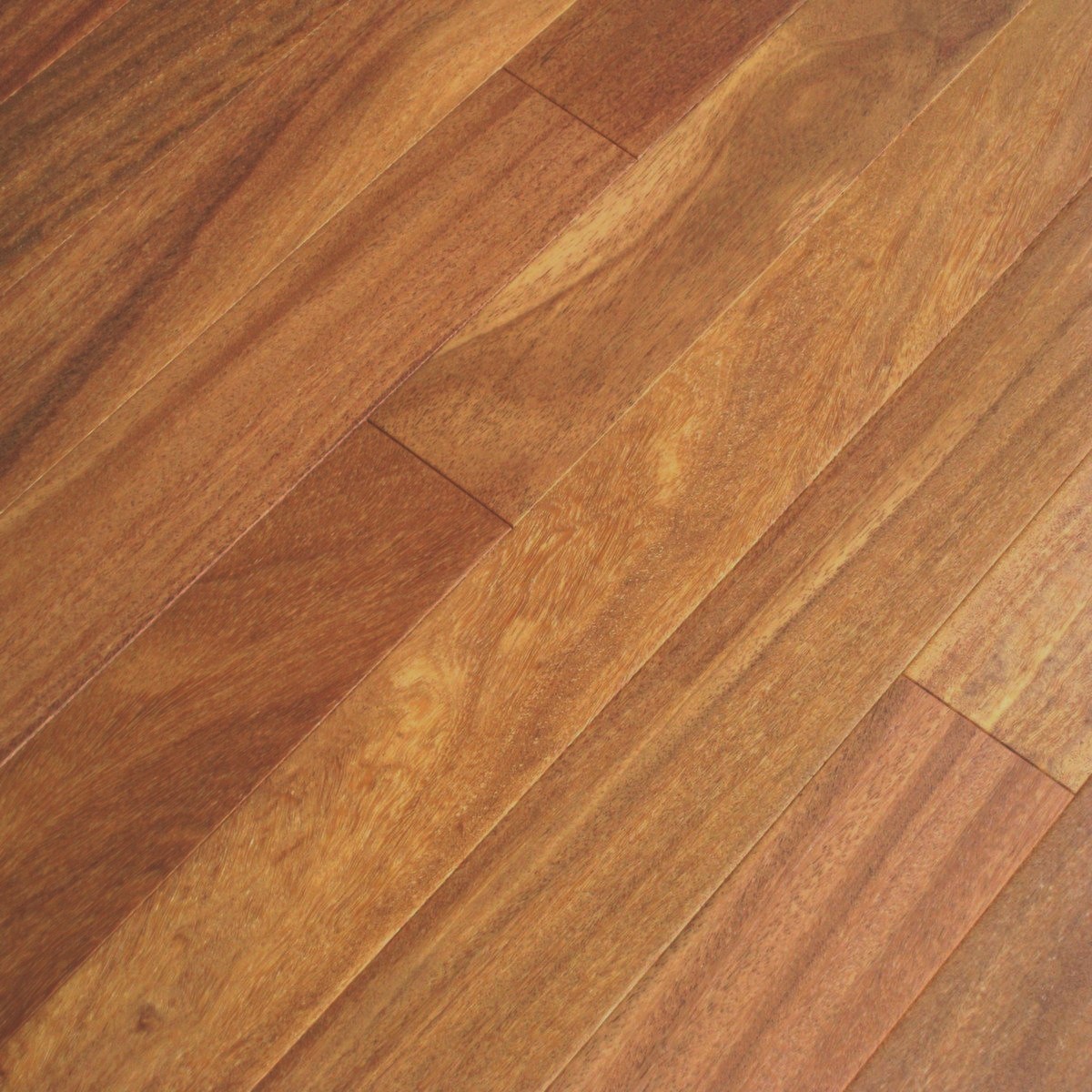Do you dream about the warmth of hardwood in the bathroom but cringe at the thought of mixing wood and water? Although some designers shy away from wood flooring for bathrooms, innovations, and expert installation can make this dream a reality in your home.
Best Type of Hardwood Floors for the Bathroom

A full bathroom may not be the best place to use hardwood floors, but your powder room or half bath is ideal. Consider choosing one of the stronger hardwood species, such as maple or walnut.
Softer woods tend to absorb moisture and humidity faster, resulting in more warping and movement across the floor.
Exotic wood floors may also be a better choice for your bathroom, mainly due to the natural characteristics of these wood species. Brazilian Teak hardwood floors have an impressive Janka rating and come from a humid corner of the globe. With the right finish and proper installation, exotic hardwood can transform your bathroom into a luxurious oasis.
Floating or Nail Down?
Solid hardwood floors are nailed to plywood subfloors, which minimizes movement and expansion. In contrast, floating wood floors are either glued or clicked together and rest freely over a subfloor or underlayment. Both types have benefits in bathroom settings.
Engineered floating wood floors are specifically designed to handle higher humidity levels, expanding and contracting as moisture changes, which helps prevent warping, cracking, and splitting. These floors are ideal for larger spaces like living rooms, hallways, foyers, and powder rooms.
When choosing hardwood flooring, look for products with a polyurethane finish to protect the wood from spills and moisture.
To reduce the risk of warping, choose solid hardwood or engineered floating wood floors with a watertight coating, which shields the planks even as they expand and contract. Avoid cheaper imitation coatings, as they can crack and peel over time, leaving the wood vulnerable.
Flooring Combinations
Many designers opt for a combination of flooring types in the bathroom, providing the charm and warmth of wood while maintaining a low risk of moisture damage. Consider using high-quality tiling around the larger bathroom fixtures–like the tub or shower–and complementing that floor with wood flooring in the balance of the room. You should still invest in the best quality, polyurethane-coated brands and clean up puddles immediately. However, a combination of wood and tile or stone can be striking in appearance and wise in maintenance.
Talk to your flooring retailer about the ideal underlayment for wood flooring in your bathroom. Most powder rooms share a subfloor with the hallway or main living area, but other bathrooms could stand alone. Always opt for top brands with solid warranties and follow the manufacturer’s care directions.
Your new wood bathroom floor is bound to look great and feel even better for years to come!
